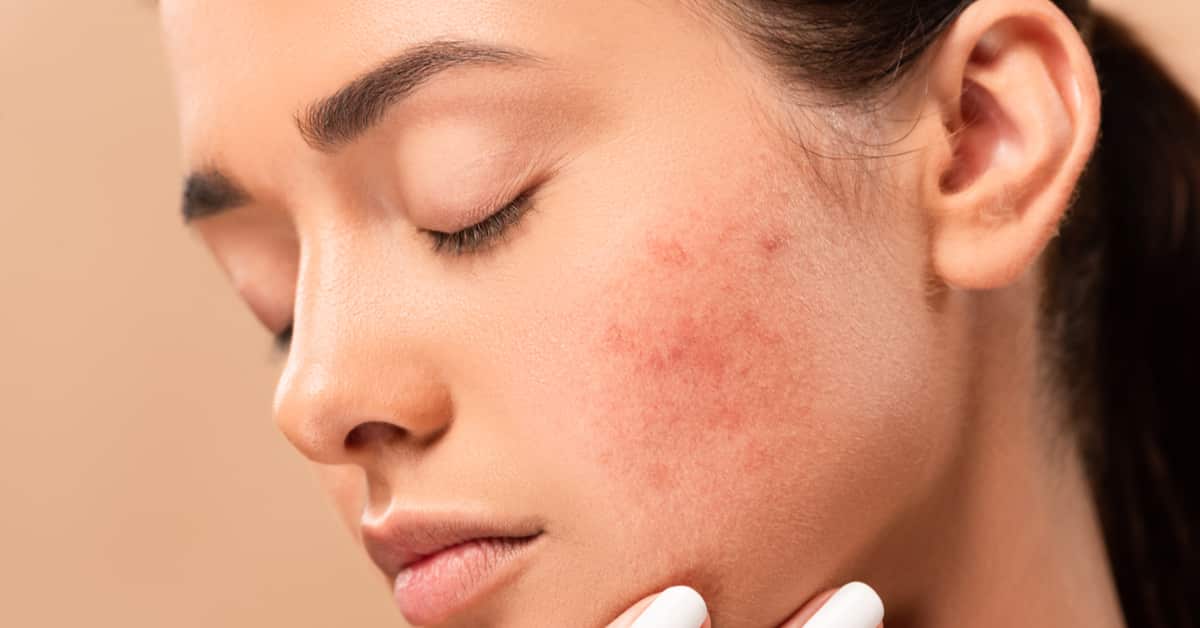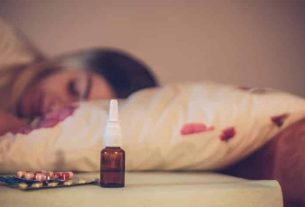The appearance of spots on the skin can be quite uncomfortable. Know how to identify types of blemishes on the face and body and the cause of each one.
The appearance of spots on the skin can be related to several factors. Such as long sun exposure, injuries, procedures, burns, use of products, hormonal changes, etc. In addition, different types of spots can appear on the face and the rest of the body.
Normally the skin is heterogeneous. Therefore, when there is a greater concentration of melanin-rich cells in a region of the skin, they act on the melanocytes, giving rise to spots. Which may have a darker, brownish, red, white color, or change color over time.
Therefore, depending on the characteristic presented by the spot, it is called melasma, ephelides, rosacea, among others. Each type of stain has a specific treatment and care routine.
However, it is necessary to pay attention to more serious cases. Yes, some types of spots on the face or body may indicate skin cancer. Therefore, observe if the size of the stain increases or if it has different colors. Ultimately, the ideal is to see a dermatologist for a more accurate diagnosis.
Types of spots on the face: what each color means
brown spots
- Melanosis – caused by excessive exposure to the sun, appearing on the hands, neck and back.
- Phytophotodermatosis – caused by the reaction of the chemical component of lemon with the sun, disappearing after a few months.
- Melasma – caused by genetic, hormonal factors or exposure to the sun. Furthermore, it is common to appear during pregnancy or when using contraceptive pills. Although there is no cure, there are treatments that help to alleviate its appearance.
Black spots
- Nevus – these are normally benign moles. However, it is necessary to observe whether its size or shape changes.
- Congenital nevus – the child is born with the spot or it appears until the age of two. Furthermore, it is important to monitor the mole and, if necessary, remove it to prevent the development of cancer.
- Melanoma – is usually a solid, flat or taller, irregular and dark lesion, and may have more than one shade. Ultimately, melanoma is one of the most serious types of cancer.
- Dark seborrheic keratosis – these are spots that appear over time. However, it has a poor transformation rate. Furthermore, it is a rough spot that usually appears on the face and folds on the body.
White spots
- Solar leucoderma or white freckles – usually appears after the age of 40, due to a decrease in melanin.
- Pityriasis versicolor – known as white cloth, the stain is caused by a fungus. Furthermore, people with oily skin are more likely to develop it.
- Vitiligo – is a genetic, autoimmune disease that develops after an emotional change.
red spots
- Bruising – is genetic and common in people with greater hair fragility.
- Senile purpura – appears on the arms of elderly people.
Red spots
- Ruby nevus – has the appearance of a ball of wool and appears on the skin unexpectedly. Furthermore, when it itches it tends to bleed.
- Psoriasis – is a type of scaling that appears in areas of the skin that suffer a lot of friction, such as armpits and groin, for example. But it can also appear on the knees, elbows and nails.
- Rosacea – is a type of reddish spot on the face, appearing on the nose, forehead, chin and cheek. Furthermore, it is more common in people with very fair and oily skin.
Types of blemishes on the face and body
In short, blemishes are pigmented marks on the skin. Furthermore, they can present different types of spots on the face and body. Which can appear in different colors. For example, brownish spots, the result of excessive melanin production.
1- Dark spots on the face: melasma
One of the most common types of blemishes on the face is a dark spot called melasma. In short, it can appear during pregnancy or menopause. Yes, it is related to hormonal changes. Therefore, it is very common to appear in people over 45 years of age.
Ultimately, hormonal changes irritate melanocytes, which cause darker skin in certain areas of the face. Furthermore, the stain tends to get worse when the person is exposed to the sun a lot. In addition to the face, the spots can also appear on the arms or legs.
A tip to alleviate melasma spots is to use sunscreen daily and exfoliate your skin twice a week. In addition to using moisturizers enriched with vitamin C and avoiding prolonged exposure to the sun. Likewise, there are ointments and creams that help lighten the skin.
2- Seborrheic keratosis
This is a dark mole that appears on the skin. However, it is usually benign, therefore, it does not pose a health threat. Furthermore, it is a natural aging process.
Furthermore, there is no need for treatment. However, it is important to have an evaluation with a dermatologist, as the spot is very similar to skin cancer.
3- Types of spots on the face: acne or chickenpox
These are spots caused by skin injuries due to acne, burns or chickenpox, also called post-inflammatory hyperpigmentation.
Furthermore, lighter spots can be alleviated using a superficial peeling. However, darker spots are only lightened using depigmenting creams. For example, musk oil.
Another option would be acid peeling, which removes the superficial and intermediate layers of the skin. This way, new blemish-free skin appears in its place.
4- Diabetes spots
Black or mixed-race people who have type 2 diabetes can develop some types of dark spots on their face and body. Mainly in the region around the neck and skin folds.
In short, the spots are caused due to the use of oral antidiabetics and hormonal changes. For example, hypothyroidism or polycystic ovaries.
Anyway, a good tip to lighten these spots is to do a homemade exfoliation once a week, using liquid soap and sugar. However, the best way to alleviate the problem is to lose weight and exercise periodically. This way, the treatment will be more effective, and may even cure type 2 diabetes. And so, you will no longer need oral antidiabetics.
5- Dermatitis (seborrheic, atopic, contact)
In short, it is a type of reddish spot that can appear due to an allergy. Furthermore, it can appear anywhere on the body, causing a lot of itching in the affected area.
Finally, dermatitis can cause brown spots, appearing after eating allergenic foods or applying certain products to the skin. For example, shrimp, strawberries, peanuts, perfumes, creams, wearing bracelets, etc.
Treatment for dermatitis can be done by applying corticosteroid-based creams twice a day, until symptoms improve. However, the ideal is to see a dermatologist to identify the cause of the allergy. This way, the person can avoid contact with what caused the dermatitis.
6- Types of spots on the face: Freckles
Very common in people with very light skin. In this way, freckles appear on the face, chest, arms, and may darken after exposure to the sun. However, there are lightening creams and lotions that help lighten freckles. But, as it is a genetic characteristic, it does not disappear completely.
Now, if you prefer, you can use homemade recipes to lighten freckles. For example, to prepare a homemade cream you will need:
Ingredients
- 1 can of Nivea cream
- hypogloss tube
- vitamin A ampoule
- 1 glass of sweet almond oil
Method of preparation and application
In short, mix all the ingredients and use daily. Another option is a homemade mask.
Ingredients
- 1 egg white
- 1 tablespoon milk of magnesia
- The size of 1 capful of liquid bepanthol
Method of preparation and application
Mix all the ingredients. Then, apply the mask to your face and let it act for 30 minutes. Finally, wash with water. Furthermore, the mask can be applied every other day for up to 4 weeks. However, it is worth remembering that it is important to use sunscreen with SPF 15 daily, to prevent existing freckles from getting darker.
7- Ringworm and white cloth
In short, white cloth, also known as beach ringworm, is an infection caused by a fungus. This causes several small white spots to appear on the skin. And, if left untreated, the white cloth spreads across the skin.
Furthermore, the fungus that causes white cloth lives on human skin, however, in a controlled manner. However, when the immune system is compromised, it can facilitate the proliferation of the fungus, causing ringworm.
Finally, to treat ringworm, it is necessary to treat it with an antifungal cream, applying it to the skin twice a day for 3 weeks. However, when the affected area is very large, it may be necessary to take an oral antifungal medication under the advice of a doctor.
8- Types of spots on the face: Skin cancer
In the case of these types of spots on the face and body, lesions appear that can have different shapes, sizes or shades. Furthermore, spots tend to appear mainly in areas of the skin where there is more exposure to the sun.
Furthermore, this type of spot begins to increase in size and may bleed. Therefore, to know how to identify skin cancer, it is necessary to observe whether:
- The stain is isolated from other stains.
- It is over 6 mm with irregular edges.
- The stain has more than one color. For example, a bluish tone.
Ultimately, it is very important to consult a specialist doctor as soon as possible. So that he can indicate the appropriate treatment, remembering that the sooner it is diagnosed, the greater the chances of curing skin cancer.
Types of blemishes on the face: care
No matter which type of blemish on the face and body it is, for effective treatment it is important to take some precautions, such as:
- Wash your face with soap suitable for your skin type.
- Always use sunscreen
- Keep your skin always hydrated with creams that are suitable for your skin type. That have whitening and antioxidant active ingredients, such as vitamin C, for example.
- Avoid excessive exposure to the sun.
- Never squeeze pimples or blackheads. Because, they can leave permanent marks on the skin.
- At night, remove all makeup and wash your face well so that no residue remains on your skin.
- Finally, before bed, use a spot treatment that contains lightening active ingredients.
Furthermore, brownish spots tend to appear more easily on black skin. This happens due to the fact that it has a greater amount of eumelanin-type melanin. Therefore, there is a need for greater care to avoid the appearance of blemishes on the face and body.
Likewise, when undergoing laser hair removal, people with darker or tanned skin may suffer from burns. Because, the laser can confuse the Leo with the skin layer, reaching the skin’s pigment. In this way, the inflammation of the lesion stimulates the production of melanin. Causing spots to appear on the skin.
Finally, if even after 1 month of care and treatments, the stains do not disappear. It is advisable to return to the doctor for reassessment and, if necessary, change the treatment.
So, if you liked this article, find out more about the subject in: How to remove blemishes from your face – Actives, home methods and treatments.

Sign up for our newsletter and stay up to date with exclusive news
that can transform your routine!
Warning: Undefined array key "title" in /home/storelat/public_html/wp-content/plugins/link-whisper-premium/templates/frontend/related-posts.php on line 12
Warning: Undefined array key "title_tag" in /home/storelat/public_html/wp-content/plugins/link-whisper-premium/templates/frontend/related-posts.php on line 13




